The 6th Generation Technology 6G network is capable of delivering speeds of 1 terabit/second or 8,000 gigabit/second.
As technology continues to advance at an exponential rate, the future of wireless connectivity appears brighter than ever before. One of the most exciting developments in this field is the advent of 5G technology is 6th Generation Technology 6G. With its promise of lightning-fast speeds, low latency, and massive capacity, 5G has the potential to revolutionize the way we connect and interact with the digital world.
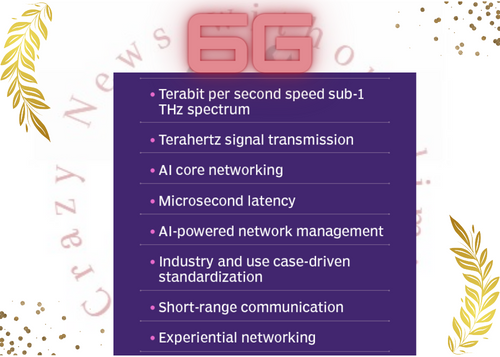
Unlike its predecessors, 5G is not just an incremental upgrade but a complete paradigm shift in wireless networking. It operates on higher frequency bands, allowing for greater bandwidth and faster data transmission. This means that downloading large files, streaming high-definition videos, and even playing graphically intensive online games will become seamless experiences, almost instantaneously.
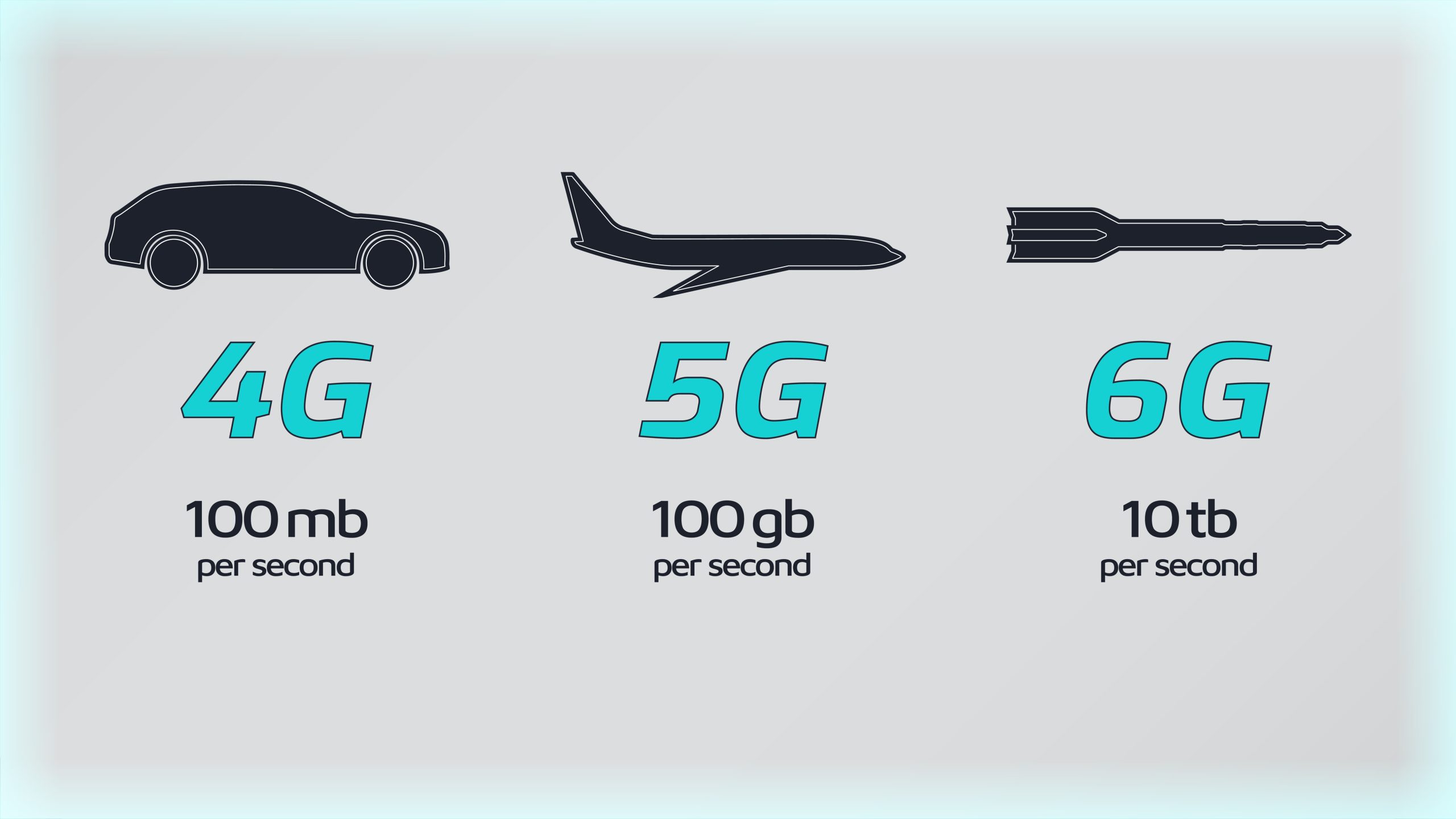
Furthermore, 5G’s low latency is a game-changer for industries such as autonomous vehicles, remote surgery, and virtual reality. With latency reduced to mere milliseconds, real-time applications will thrive, opening up new possibilities for innovation and efficiency across various sectors.
The capacity of 5G networks is another aspect that sets it apart from previous generations. As more and more devices become connected, the demand for network resources increases exponentially. With 5G, thousands of devices can be supported within a small area without compromising performance. This means that the Internet of Things (IoT) will flourish, enabling smart cities, intelligent homes, and interconnected devices that seamlessly communicate with each other.
However, the true potential of 5G extends far beyond its technical capabilities. It has the power to transform industries and reshape our daily lives. From healthcare to transportation, manufacturing to entertainment, 5G will unlock new opportunities for innovation, efficiency, and economic growth.
Nevertheless, the transition to 5G is not without its challenges. The deployment of the necessary infrastructure, including a dense network of small cells and advanced antennas, requires substantial investments and coordination. Additionally, issues surrounding spectrum availability, security, and regulatory frameworks need to be addressed to ensure a smooth and successful transition to this new era of connectivity.
Now 6th Generation Technology 6G research has already gained momentum shortly after the 5G global rollout
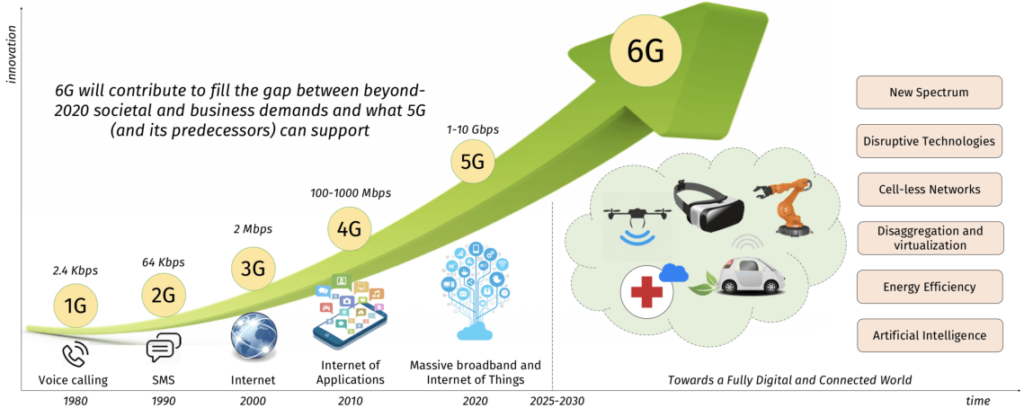
5G – The fifth generation network has barely been commercialized and only a few places are enjoying its unique benefits and researchers have taken a step forward to research the upcoming wireless technology. Still in the research phase, it is being addressed as 6G, following the tradition of previous networks and keeping it simple for now. According to Mahyar Shirvanimoghdam, a wireless communications expert at the University of Sydney, the 6th Generation Technology 6G network is capable of delivering speeds of 1 terabit/second or 8,000 gigabit/second.
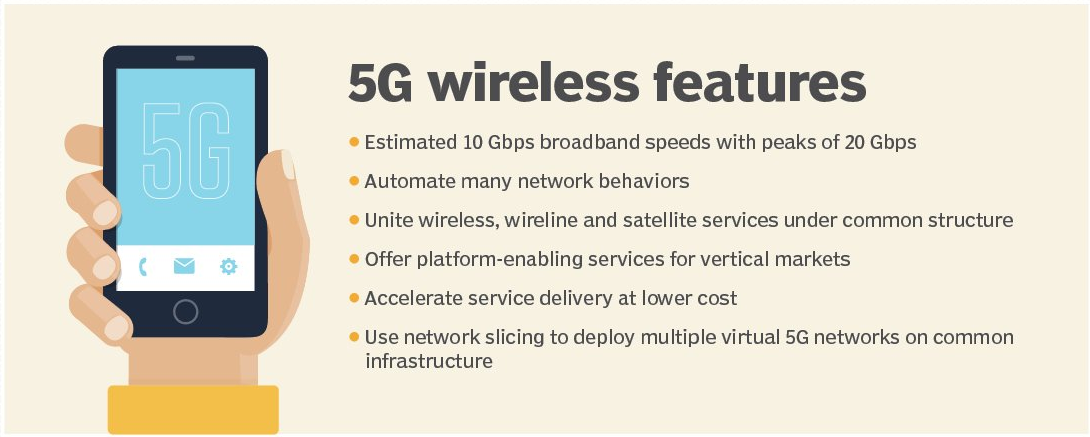
To put it this way, Netflix streaming requires 56 gigabits of data per hour to watch the best quality videos and using a 6G mobile network, you can download 142 hours of Netflix’s top quality videos every second. This high-level data processing capability has the potential to usher in new dimensions in the technology era with new applications and services that will transform the lives and work processes of consumers and the enterprises deploying it to get the most out of the latest technologies of the 21st century. Will change it completely.
Difference between 5G and 6G networks-
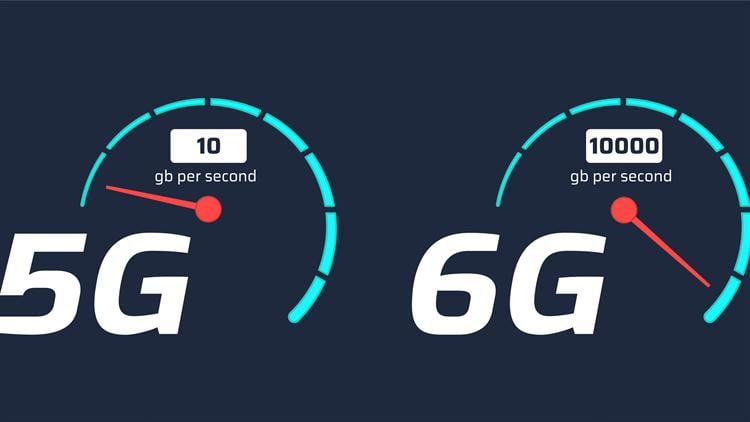
| Features | 5th Generation Technology 5G | 6th Generation Technology 6G |
| Frequency Bands | • Sub 6 GHz, | • Sub 6 GHz, |
| • mmwave for fixed access | • mmwave for mobile accessm exploration of THz bands (above 140 GHz), | |
| • Non-RF bands (e.g. optical, VLC) etc. | ||
| Data rate | 1 Gbps to 20 Gbps (Downlink Data Rate – 20 Gbps, Uplink Data Rate – 10 Gbps) | 1 Tbps |
| Latency (End to End Delay) | 5 ms (Radio : 1 msec) | < 1 ms (Radio : 0.1 msec) |
| Architecture | • Dense sub 6 GHz smaller BSs with umbrella macro BSs | • Cell free smart surfaces at high frequencies (mmwave tiny cells are used for fixed and mobile access) |
| • Mmwave small cells of about 100 meters (for fixed access) | • Temporary hotspots served by drone mounted BSs or tethered Balloons. | |
| • Trials of tiny THz cells (under progress) | ||
| Application types | • eMBB (Enhanced Mobile Broadband) • URLLC (Ultra Reliable Low Latency Communications) • mMTC (Massive Machine Type Communications) | • MBRLLC • mURLLC • HCS • MPS |
| Device types | • Smartphones • Sensors • Drones | • Sensors & DLT devices • CRAS • XR and BCI equipment • Smart implants |
| Spectral and energy efficiency gain | 10 x in bps/Hz/m2 | 1000 x in bps/Hz/m3 |
| Traffic Capacity | 10 Mbps/m2 | 1 to 10 Gbps/m2 |
| Reliability From | 10-05-2023 | 10-09-2023 |
| Localization precision | 10 cm on 2D | 1 cm on 3D |
| User experience | 50 Mbps 2D everywhere | 10 Gbps 3D everywhere |
5G and 6th Generation Technology 6G use higher ranges of wireless spectrum for faster data transmission than 4G, 3G and 2G networks. However, when comparing 5G vs 6G, the former is allocated to low band and high band frequencies – sub-6 gigahertz (GHz) and above 24.25 GHz respectively. The latter will operate at 95 GHz to 3 THz (terahertz) frequency range. Since, different spectrum is used, 5G vs 6G technology can have multiple use cases for different industrial sectors to increase their efficiency.
Faster than 5G technology

Considering the performance factor, 6G will contribute to higher performance which is far superior to the newly deployed 5G wireless networks. Operating on the terahertz frequency band, 6th Generation Technology 6G will deliver peak data rates of 1,000 gigabits/second with air latency of less than 100 microseconds. When we talk about 5G vs 6G network speed, 6G speed is expected to be 100 times faster than 5G with better reliability and wider network coverage.
6th Generation Technology 6G wireless accelerates IoT after 5G
The Internet of Things (IoT) is becoming a reality today with the implementation of 5G based solutions after extensive 5G network testing, which was not possible with previous networks like 4G LTE due to poor planning of applied frequencies. The frequencies used by smart devices to transmit the data needed to deliver the desired results were too narrow and congested. This is where 5G filled the gap and moving forward with 6G we expect to see ten times more devices connected per square kilometer with the number of connected devices increasing in the coming years.
Also Read – Understanding iPhones Security 2023 :Unmasking the Detective Virus
Low latency on both sides
The time taken by a packet of information transmitted over a frequency is known as latency. 4G networks had a latency of about 50 milliseconds (ms) while 5G networks had ten times less latency than 4G, i.e. 5ms. With 6th Generation Technology 6G Internet, latency will drop from 1 millisecond to 1 microsecond, making latency five times lower than fifth-generation networks, enabling massive data transmission in less than a second.
 In conclusion
In conclusion
- However 5G represents a significant leap forward in wireless networking.
- Its blazing fast speeds, low latency and power to transform industries, enhancing our digital experiences and vast capacity have opened up a world of possibilities.
- As we stand on the cusp of this technological revolution, it is essential for businesses, governments and individuals to embrace the opportunities presented by 5G.
- As 6th Generation Technology 6G networks still do not exist and are only in a research phase, enterprises have Following the successful comparison of 6th Generation Technology 6G networks, state-of-the-art wireless use cases have begun to be envisioned with 6th Generation Technology 6G .
- The main objective is to transition into the new era of wireless technology and bring new innovations to change the world in the upcoming years.
- The extremely exciting possibilities regarding speed and reliability of the new generation of wireless networks are expected to become a reality soon, when 6th Generation Technology 6G mobile networks will enter the telecommunications sector over a wide area.
- This new age technology is definitely going to give new dimensions to the way we live or do our business today and in the post-Covid era, making it a hyper-connected world.
FAQ
There is no doubt that we may see ultra-high speeds and power that will entice customers to 6G services, but what will be the 6G architecture and components that will pave the way to build robust and resilient 6G networks. Connectivity and automation with advanced versions can aid in the development of such networks as anticipated in the previous discussions. It is also suggested to overcome the shortcomings of the current network, improve the network design and optimize the network. Advanced AI systems and powerful edge computing will leverage the lightning-fast speeds of 6G to coordinate complex systems and develop seamless internet connectivity. -Google. The University of Aveiro hosted the 2019 'Why 6G?' released a white paper on 6G, discussing the driving forces behind the development of new networks such as 6G, the latest features and key technologies that can be expected. Samsung is also keen to participate in the research race as it started 6G research in the month of June in 2019. South Korean telecom conglomerate SK Telecom has signed agreements with Ericsson, Samsung and Nokia to jointly conduct research and development in 6G mobile network technology. Terraview, a terahertz test equipment manufacturing organization was recently backed with £191 million funding from the Sustainable Innovation Fund along with Innovate UK, a United Kingdom-based innovation agency. This is considered an important step towards making 6G a reality. With a focus on harnessing its expertise and intellectual property, Terraview will help build the building blocks for future 6G networks and accelerate its development. Google and Apple have expressed their interest in 6G research and joined the Next G Alliance, which was created in October 2020 to create a 6G roadmap and help North American companies prepare themselves and be at the forefront of 6G adoption around the world. Was created to inspire. Korean multinational company LG Electronics has taken steps towards developing 6G technology with the establishment of a research center. The company's CTO Park II-¨Pyung noted the company's role in supporting R&D for next-generation 6G networks and leading the way in global standardization and creation of new business opportunities.What will 6G architecture look like?
Which multinational companies and universities are showing interest in 6G research?
-Apple Inc.
-Samsung
-SK Telecom, a South Korean telecommunications organization
-Terraview UK based
-University of Aveiro
-LG Electronics, a Korean multinational company and many organizations and universities are showing interest and involving themselves in researching the new technology.The University of Aveiro's 2019 white paper 'Why 6G?' What were the main insights and conclusions presented in the title? About the motivations, features and key technologies driving the development of 6G networks?
When did Samsung begin its involvement in 6G research, and what is its motivation for participating in this research effort?
With which telecom organizations has SK Telecom partnered for joint research and development in the field of 6G mobile network technology?
How does TerraView plan to contribute to the development of 6G networks, and what significant support has it recently received to further this goal?
What is the Next G Alliance and why did Google and Apple express their interest in it regarding 6G research?
What is the role of LG Electronics in developing 6G technology?



